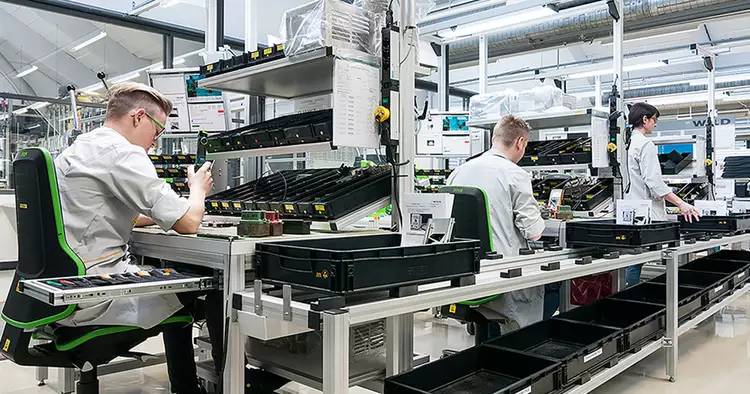Today, three worlds determine our work: the Internet of Things, the Internet of people and the analog world. On the Internet of Things, everything is connected to everything else. Computers, machines and products communicate with one another globally. Then there is the Internet of people that connects us all quickly and conveniently. At the same time, we still live in an analog world, which is where we keep our machines. These three worlds are connected. They have created opportunities that once upon a time would have been called magic and, until recently, were considered science fiction.
Our products and services originate from this connectivity. Accordingly, since the beginning of the division of labor, quality also has its origins in connectivity. The more complex a product and the more of it we make, the larger and more widespread are the networks we require to combine very different competencies. That’s why we connect individuals, teams and whole companies.
Networks change constantly, much faster and significantly today than they did some years or even decades ago. Large corporations have become more volatile, selling divisions and entities and acquiring new ones. Developer teams in Israel, app programmers in India and freelancers around the world may work temporarily on the same project. The supply chain has long become more of a net, a net that can reconfigure around a network node if said node breaks down. The larger the nodes that break down, the more the net will change in order to close the gap.
The fact that we have more, faster and more in-depth innovations than ever before also causes the net to change constantly and significantly. Decades of exponential growth in computing power and capacity combined with scientific, technological and societal progress that has accelerated since the first industrial revolution give birth to more and more innovations. Connected communications ensure they are spread across the world at lightning speed. And many innovations appear as disruptions that change markets, industries and societies.
As in the old days, quality comes from connections, however, the rules of the game have changed radically. Nonetheless, many of our processes date from a time when dynamics were much slower, companies more stable over time and products less complex. A time in which we maintained the image of the supply chain, in which strong and extremely large corporations at the top established the rules for cooperating and thus the rules for quality management across the supply chain.








Comments
No comments